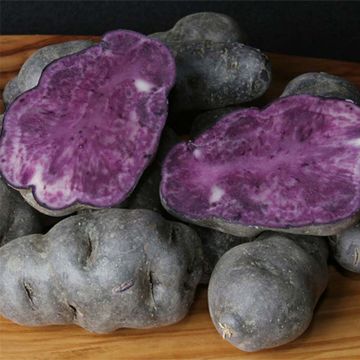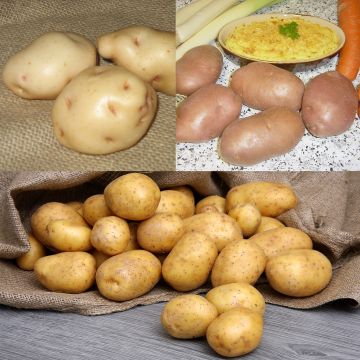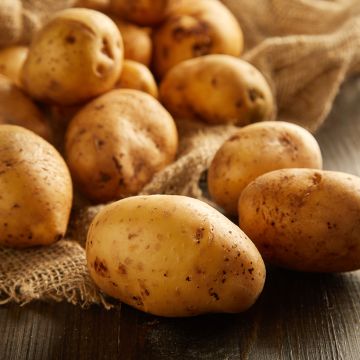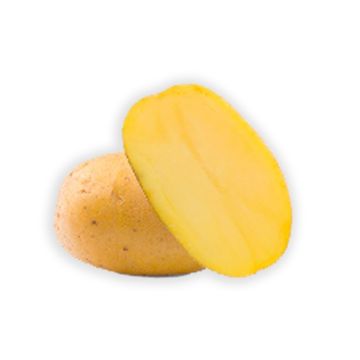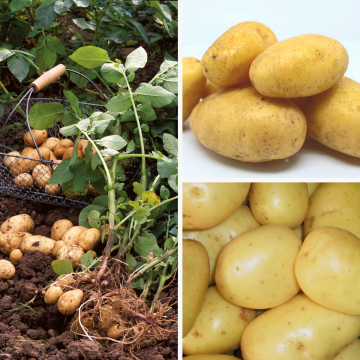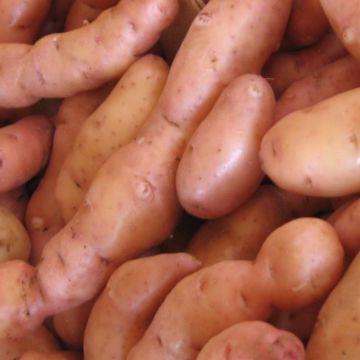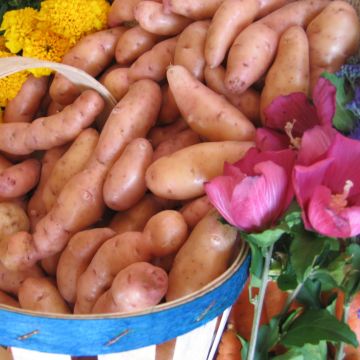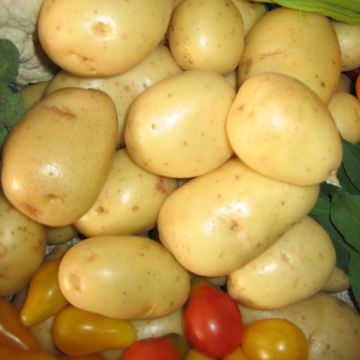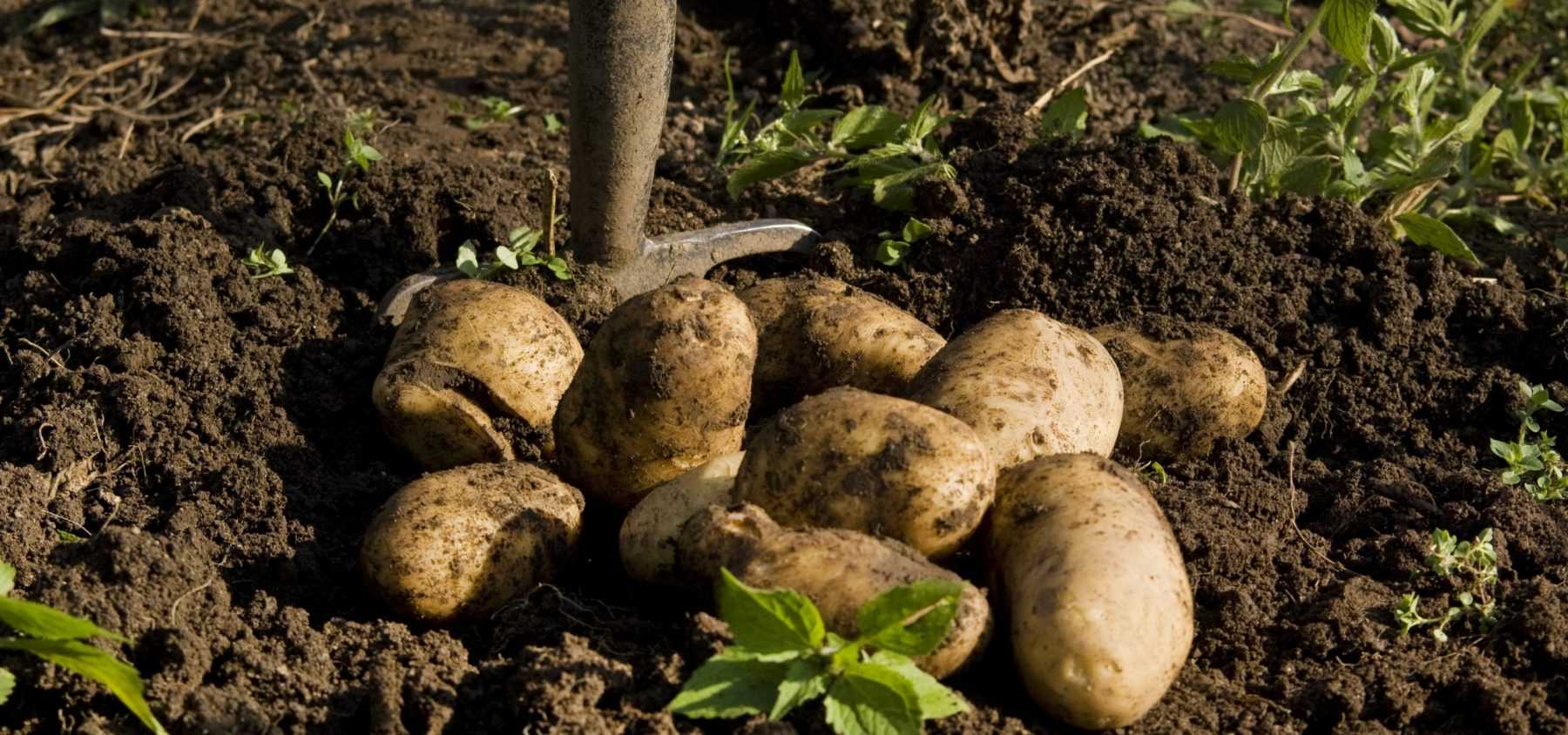
Growing, Harvesting and Storing Potatoes
All our tips for successful cultivation
Contents
The potato or Solanum tuberosum is an essential vegetable in the kitchen garden! Its edible tubers lend themselves to numerous recipes: as chips, mashed, in gratins, sautéed or steamed – there are so many different ways to enjoy them! Potatoes are relatively easy to grow and offer good yields. If you’d like to grow them in your garden, discover all our tips for planting, caring for and harvesting them!
Where to plant potatoes?
Potatoes thrive in sunny locations with rich, deep soil. Add well-rotted compost (at least 3 kg per square metre) the previous autumn, lightly forking it into the top 5 cm of soil after loosening the ground with a spade or garden fork.
In the vegetable garden, potatoes grow well alongside maize, cabbages and generally all legumes (Fabaceae): peas, broad beans, French beans… However, avoid planting them near tomatoes, peppers or aubergines.
→ Discover everything about potatoes in our complete guide
Read also
The potato: planting, growing, harvestWhen to plant them?
Potatoes are planted, after being sprouted, from February under cover (cold greenhouse, tunnel or under fleece) for “early” varieties and from mid-March to May for other varieties, when the soil temperature reaches 10°C.
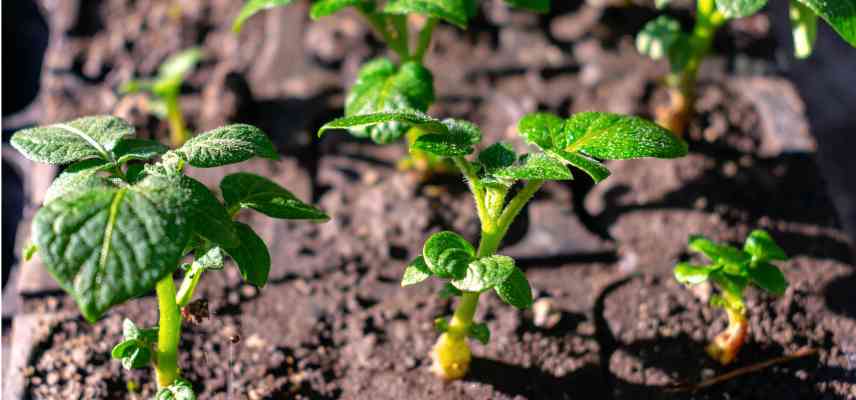
Discover other Seed potatoes
View all →Available in 1 sizes
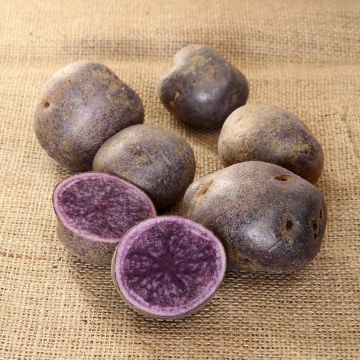
Available in 1 sizes
Available in 1 sizes
Available in 1 sizes
Available in 2 sizes
Available in 1 sizes
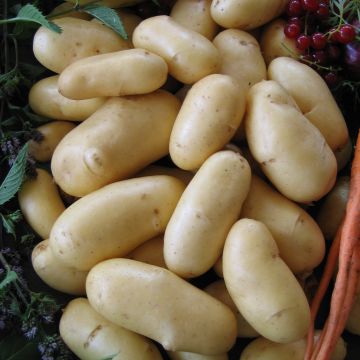
Available in 3 sizes
Available in 1 sizes
Available in 1 sizes
Available in 3 sizes
How to plant them?
There are different techniques for growing potatoes: traditional cultivation with earthing up during growth, mulching, and tower cultivation.
Traditional Technique
- In autumn before planting, loosen the soil and add compost or well-rotted manure
- From January onwards, you can start chitting potatoes by placing them in trays in a bright, cool room.
- In spring, dig trenches spaced 50 to 70 cm apart.
- Place the chitted potatoes in the trenches, 10 cm deep, spaced about 40 cm apart.
- Cover with soil and water generously.
- Two weeks later, you can begin earthing up the stems by drawing soil around them to form a ridge.
- You may earth them up once or twice more during their growth. Discover our advice sheet: When and how to earth up potatoes?
Mulching Method
Planting under mulch involves placing the tubers on the soil and covering them, as they grow, with a thick layer of mulch to protect them from light. Also discover how to grow potatoes on grass and watch our video Growing potatoes under mulch.
- Start by chitting the potatoes.
- In spring, mow the lawn where you wish to plant the potatoes.
- Simply place them on the lawn, spacing them about 40 cm apart.
- Cover them with a little garden soil mixed with compost.
- Add a layer of dry mulch (straw, dried grass, dead leaves, wood chips…) about 15 cm thick.
- Water.
Tower Planting
This technique allows potatoes to be grown vertically, making them suitable for small spaces like patios, courtyards or small gardens.
- Chit the potatoes.
- Take a large plastic bag, tall enough, and pierce a few holes in the bottom. This can also be done in a wooden crate or a cylinder of fine-mesh wire.
- Place 5 to 10 cm of well-rotted compost in the bag
- Place a chitted potato inside
- Cover with compost and water.
- Once the plant reaches about 10 cm in height, add another layer of compost
- Repeat this several times, supporting the plant’s growth but without covering its top leaves.
- Remember to water regularly.
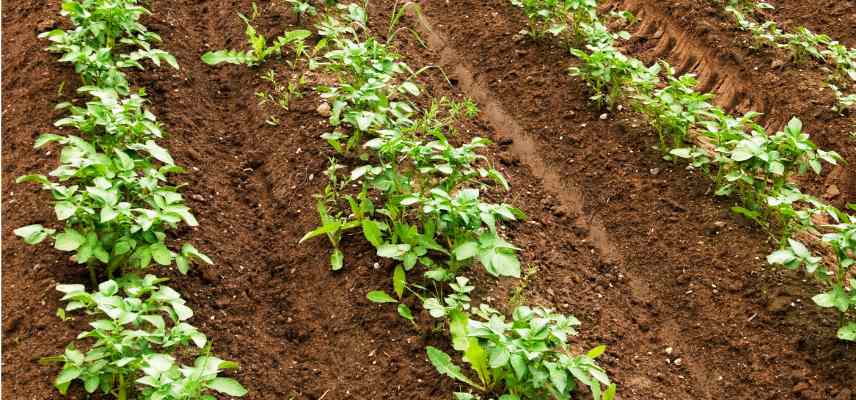
Read also
Planting potatoesWhat are the diseases and pests?
The Colorado potato beetle is the main pest affecting potatoes. In case of an infestation, manually collect and destroy them, then spray with a natural pyrethrum-based insecticide. Sowing flax seeds can also help keep them at bay.
The most common disease is blight, caused by a fungus, which can be prevented by:
- maintaining proper planting distances,
- practising good crop rotation: potatoes should not be grown on the same plot for at least 5 years,
- using resistant varieties, such as ‘Bernadette’.
As a preventive and curative measure, spray with a Bordeaux mixture solution (2 grams per litre of water) and repeat the treatment after each rainfall.
When to harvest potatoes?
Yellowing foliage is a sign that potatoes are ready to be harvested, except for “early” varieties which are picked before full maturity, when the flowers fade.
Harvesting should be done in dry weather when no rain is expected for several days. Here’s how:
- Gently lift the plants using a hand fork, a special potato harvesting spade, or a garden fork with blunt tines to avoid damaging the tubers,
- Leave them to dry in the sun for one or two days to ensure optimal storage.
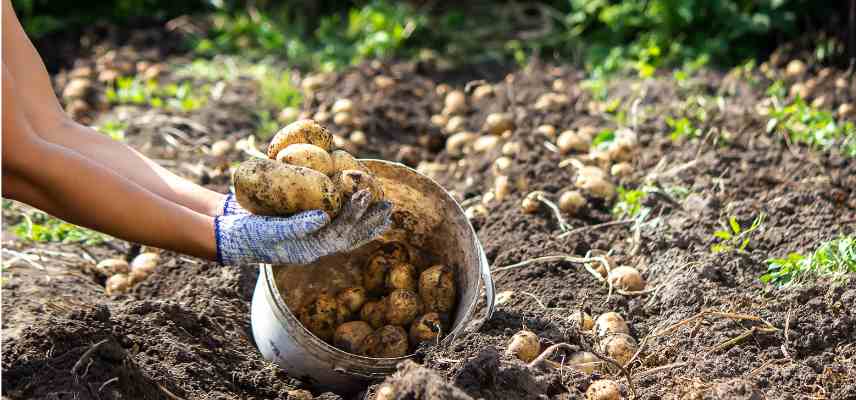
How to preserve them?
To ensure potatoes keep for several months, you should:
- Choose a suitable variety such as ‘Désirée’, ‘Manon’, ‘Samba’ or ‘Nicola’,
- Store them in jute sacks or large wooden crates, in a cool, dry, well-ventilated and dark place (cellar or windowless garage).
To avoid using chemical anti-sprouting agents, it may sometimes be necessary to remove sprouts during storage.
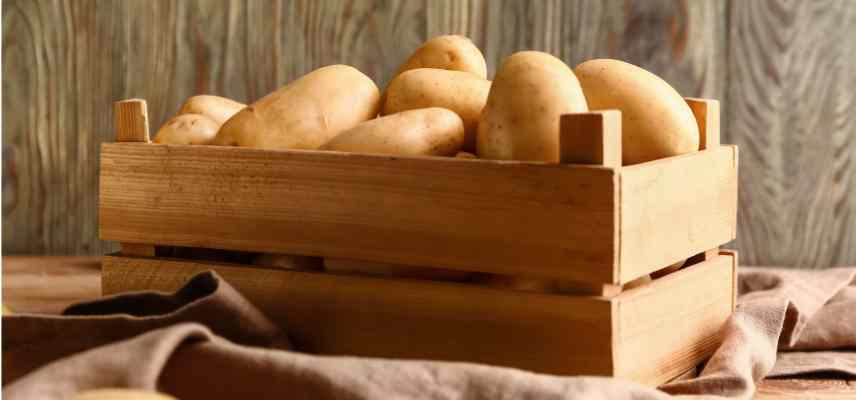
- Subscribe!
- Contents


































